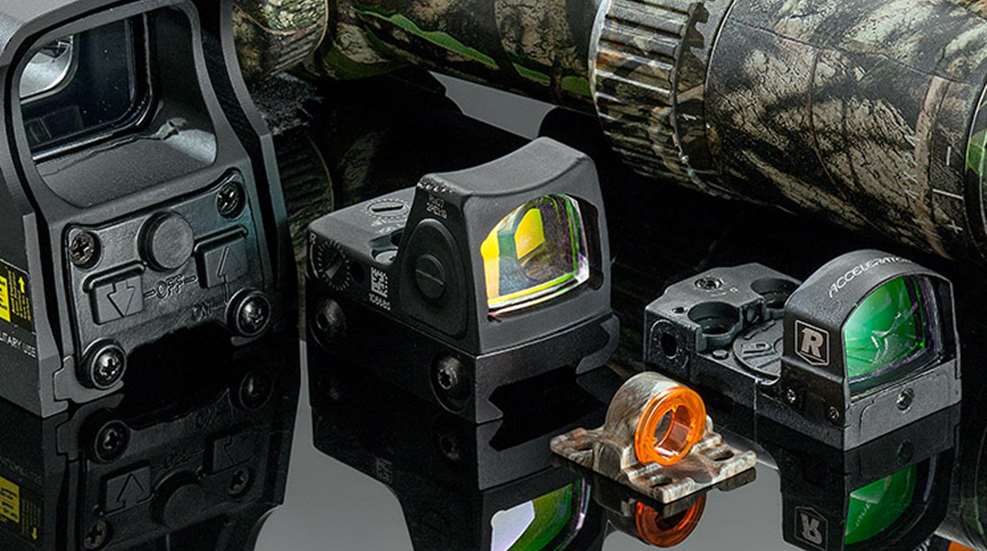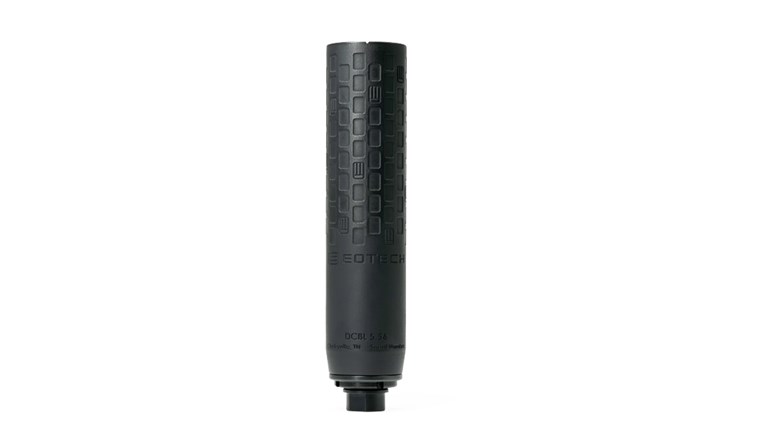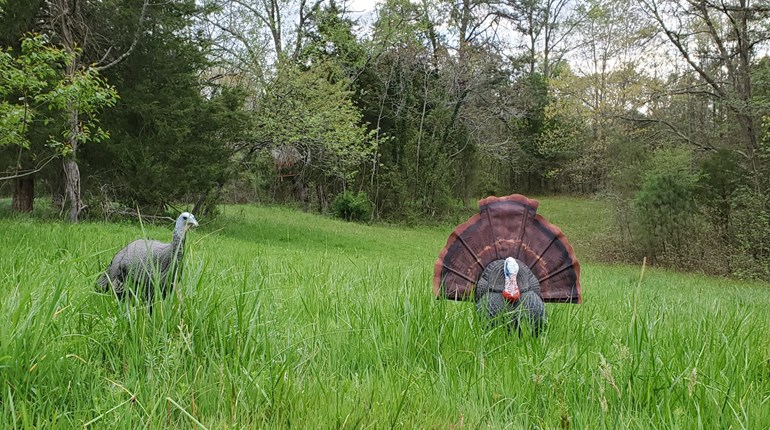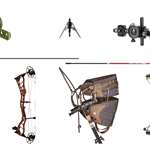
It took me about 30 years of hunting turkeys to cozy up to the idea of placing an optic on my turkey gun. I never had a problem killing gobblers with my dual-beaded 12-gauge, so my thought process was: Why would I voluntarily introduce another variable to break, get jarred off zero or pummel my face? This old-school logic may remain true for those turkey hunters who keep shots at reasonable ranges—or who don’t wish to pay for quality optics. Nevertheless, turkey optic technology has advanced greatly from traditional riflescopes. A quality red dot optic such as EOtech’s Model 518 can negate your concerns while lending several advantages over a shotgun bead. Here’s seven of them.
7. Make accurate shots from any position.
A couple years ago while hunting at Florida’s Black Boar Ranch, an Osceola waltzed in to my setup perfectly—had I been left handed. With very little cover except the narrow tree I leaned against, there was nothing I could do—had I been using my Remington’s brass bead. Instead of shifting my entire body around to shoulder the shotgun normally, I simply slid it over to my left shoulder, closed my right eye, placed the dot on the turkey’s head (despite my head not being precisely aligned) and pulled the trigger. I was just as pleasantly surprised to learn that the bird had a 10-inch beard. I was also surprised that my eye socket was not dripping blood due to the tremendous recoil of the 3.5-inch shell and my horrible south-paw shooting form. That brings me to reason No. 6.
6. A compact red dot sight will punish you none.
A red dot sight allows nearly an acre of eye relief. Alright, maybe that’s an exaggeration, but I’ll put it this way: If you get tagged in the eye by an EOtech which is typically mounted just above the shotgun’s chamber, something went indescribably wrong. It just doesn’t happen.
5. Quality red dot sights will hold zero.
My 7.5-pound Benelli SBE, shooting a Federal Premium, 2 ¼-ounce, 3.5-inch copper plated No. 6 shell delivers about 65-ft. lbs. of recoil. That’s on par with a typical-weight .416 Rigby bolt action—a classic elephant gun. No doubt about it, this is not the time to buy a cheap scope at Wal-Mart for $59. Fact is, if our Navy SEALS stake their lives on this optic (and Aimpoints and Trijicon Acogs) at sea, on land and in the air, I think it’ll be fine for a few hours of turkey hunting on a sunny day in April. Indeed, I haven’t had one break or get whacked out of zero—ever. And if it ever did crap out mid-hunt, I have two options. 1. I can take it off and use my shotgun’s bead—which takes about 1 second—or 2. I can call it a morning and go get breakfast.
4. Modern optics are easy to mount.
Just a decade ago mounting a scope on your shotgun’s receiver was like playing Jenga with your drunk uncle—shaky at best. Now, however, most dedicated turkey guns come from the factory with a Picatinny rail. Combined with the EOtech’s lever-style removable mount, this process takes about 1 second. Even the metro-looking salesman behind the Dick’s counter can do it, maybe.
3. The batteries last longer than the entire turkey season.
The 518 runs on two AA batteries. Lithiums last about 1,000 hours. I like to insert new batteries and turn mine on before the season starts. It usually burns out around June.
2. It will force you to aim.
While I’ve never missed a turkey among witnesses—and I wouldn’t admit it if I did—I often hear of hunters getting excited at the moment of truth and focusing on the bird rather than the bead. They tend to gaze over the sights and therefore the shot goes high—or wherever. It’s pretty tough to miss a glowing red dot between you and the bird.
1. You’ll kill more turkeys.
While hunting in Oklahoma with a new turkey load—Winchester’s Long Beard—and using a custom choke, I found that my pattern at 30 yards was frightfully tight—like, the size of a softball. At 15 yards? Yikes. Sure, this means I could kill a turkey at 70 yards, but it also means I could also miss one bigger than Jerry’s World. So I zeroed my shotgun’s EOtech like I would a rifle and ventured forth confidently with my tactical turkey rig. When I saw a big Rio fly from the roost and land in a semi-nearby field, I held the dot on the top of its head and fired. Had I not stepped it off myself, I likely would’ve called Keith Wood over at the Bullshooter’s blog. I don’t even like to tell of such feats of ridiculousness for fear that hunters will try the same stunt when they should be calling gobblers closer, but if the shot would have been an NFL field goal, it would’ve been a record. Fact is, if you insist on using an ultra-tight choke and crazy-new load with an old brass bead, you’re asking for a gut-wrenching miss.




































